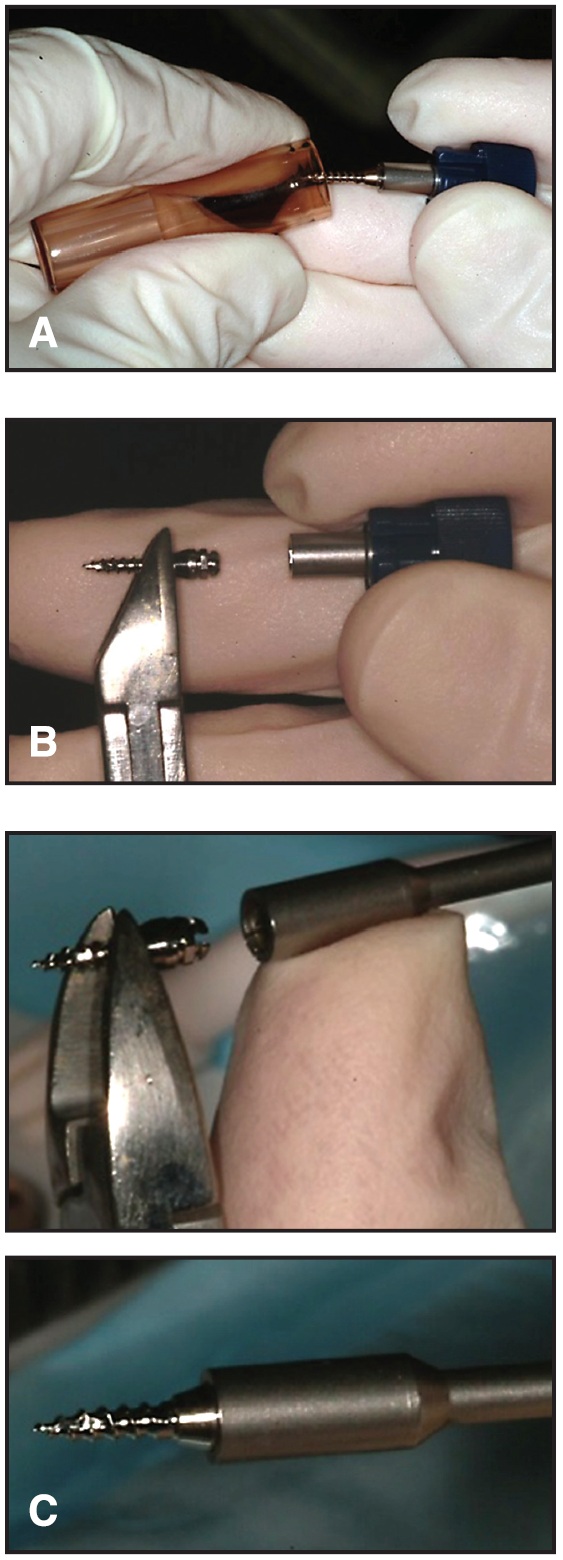The [tomas pin* temporary anchorage system features presterilized miniscrews that are packaged in individual glass tubes. The plastic stopper that seals the tube also holds the head of the screw for easy removal and can be used as a "thumb driver" for initial insertion (A). After the self-drilling miniscrew is started into the cortical bone, the typical long-shaft screwdriver is employed for final insertion.1,2
Unfortunately, in some intraoral sites (especially posterior locations), or when attempting to insert a miniscrew into dense bone, the small thumb driver can be difficult to manipulate. In these instances, it may be preferable to remove the miniscrew from the small driver and use the longer driver for insertion.
A sterile pin-and-ligature cutter is used to gently grasp the screw at the base of the head, taking special care to avoid touching the threads, which could crush them and thus prevent successful placement. The miniscrew is then pulled out of the thumb driver (B), and the head of the screw is inserted into the longer manual screwdriver (C).
FOOTNOTES
- *Dentaurum, Inc., 10 Pheasant Run, Newtown, PA 18940; www.dentaurum.com. Tomas is a registered trademark.
Similar articles from the archive:

REFERENCES
- 1. Ludwig, B.; Baumgaertel, S.; and Bowman, S.J.: Mini-Implants in Orthodontics: Innovative Anchorage Concepts, Quintessence Publishing, London, 2008.
- 2. Baumgaertel, S.: TAD Clinical Reference Guide: Keys for successful TAD placement & efficient biomechanics, version 2, Dentaurum, Ispringen, Germany, 2009.


